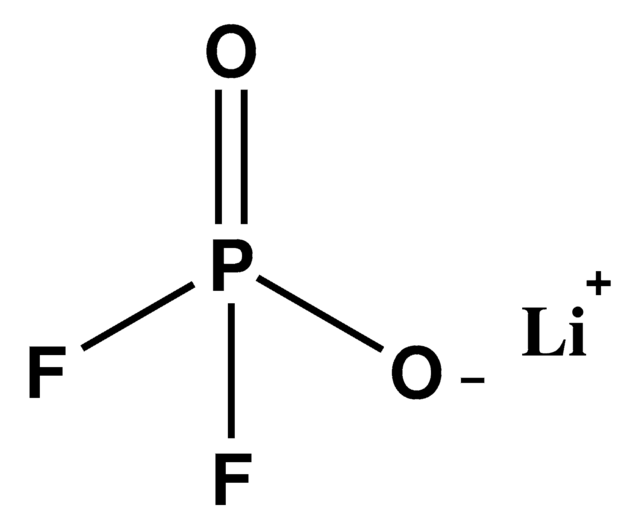757136
Lithium bis(oxalato)borate
Sinónimos:
LiBOB, Lithium bis(ethanedioato)borate, Lithium bis(oxalate)borate
About This Item
Productos recomendados
form
powder or crystals
greener alternative product characteristics
Design for Energy Efficiency
Learn more about the Principles of Green Chemistry.
sustainability
Greener Alternative Product
mp
>300 °C (lit.)
application(s)
battery manufacturing
greener alternative category
SMILES string
[Li+].O=C1O[B-]2(OC1=O)OC(=O)C(=O)O2
InChI
1S/C4BO8.Li/c6-1-2(7)11-5(10-1)12-3(8)4(9)13-5;/q-1;+1
InChI key
NVQAYVUCVASGDK-UHFFFAOYSA-N
¿Está buscando productos similares? Visita Guía de comparación de productos
General description
Application
Legal Information
related product
signalword
Danger
hcodes
Hazard Classifications
Acute Tox. 4 Oral - Eye Dam. 1 - Skin Sens. 1A
Storage Class
13 - Non Combustible Solids
wgk_germany
WGK 1
Certificados de análisis (COA)
Busque Certificados de análisis (COA) introduciendo el número de lote del producto. Los números de lote se encuentran en la etiqueta del producto después de las palabras «Lot» o «Batch»
¿Ya tiene este producto?
Encuentre la documentación para los productos que ha comprado recientemente en la Biblioteca de documentos.
Los clientes también vieron
Artículos
Solid-state Li batteries: Review of solid electrolytes, ion conduction, structures, and electrochemical processes.
Solid-state Li batteries: Review of solid electrolytes, ion conduction, structures, and electrochemical processes.
Solid-state Li batteries: Review of solid electrolytes, ion conduction, structures, and electrochemical processes.
Solid-state Li batteries: Review of solid electrolytes, ion conduction, structures, and electrochemical processes.
Nuestro equipo de científicos tiene experiencia en todas las áreas de investigación: Ciencias de la vida, Ciencia de los materiales, Síntesis química, Cromatografía, Analítica y muchas otras.
Póngase en contacto con el Servicio técnico













